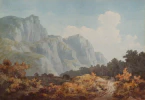Women''s Impact in Art

Why Women’s Stories are Undervalued in Art
Despite significant progress in gender equality, women are still often relegated to the sidelines in various fields, including art. In the world of storytelling and creativity, men are often given the mantle for universal communication, while women’s stories are thought to be only relevant to other women. But why is this the case?
The speaker in the video shares her personal experiences of facing gender bias in the creative industry. She recounts how a curator at Laas Geel caves in Somaliland dismissed the possibility of women painting the ancient cave art. The speaker also highlights how iconic stories such as “E.T.” and “Hamlet” are primarily written from a male perspective, even though they are marketed as stories about all humanity.
The speaker argues that the idea of men as the default storytellers and women’s stories being secondary or less important is ingrained in our culture. She suggests that we need to challenge this idea and acknowledge the contributions of women to the world of art. It is crucial to recognize the value of women’s experiences and perspectives in shaping our understanding of the world.
To make this change, the speaker encourages the audience to support women artists and insist on their voices being heard. She calls on artists, both men and women, to imagine a gender-equal world and use their creativity to bring this vision to life.
It is essential to recognize that the undervaluation of women’s stories is a pervasive issue that affects not only the creative industry but also society as a whole. It is crucial to give women an equal platform to share their experiences and perspectives to shape our understanding of the world.
The Laas Geel caves: a glimpse into the history of art and gender bias
The Laas Geel caves in Somaliland contain some of the oldest cave paintings in the world, dating back 9,000 to 11,000 years ago. These paintings depict how humanity has evolved and provide insight into our identity and understanding of our surroundings. However, when the speaker asked the curator of the caves about the men and women who painted them, he looked at her askance and said, “Women didn’t paint these pictures. Men made these marks. Women don’t do these things.”
This attitude towards women’s abilities is not uncommon and is seen in many areas of life, including the world of art. Women are often told that their experiences and issues are only relevant to women and of passing interest to men. They are marginalized and their stories are deemed less important than men’s stories. This belief is deeply ingrained and can color whether we are prepared to believe that women’s stories matter.
The speaker argues that unless we are prepared to believe that women’s stories matter, women’s rights don’t really matter, and change cannot really come. Therefore, it is important to acknowledge the gender bias in history and art and ensure that women are given equal representation and opportunities to express themselves creatively.
Why men feel they have the mantle for universal communication
Throughout history, men have held a dominant position in society, which has allowed them to shape the narratives that we see and hear. This is particularly evident in the world of art, where male artists are often seen as the only ones capable of producing works of universal importance. In contrast, women’s art is often dismissed as being only about “women’s issues” and not relevant to the broader human experience.
This attitude is rooted in the belief that creative genius resides in men and that men are the only ones capable of telling universal stories on behalf of all of us. Women are often relegated to the margins, and their stories are viewed as less important than men’s. This attitude is evident even in the way we talk about art. For example, when discussing a piece of art created by a woman, we often focus on the artist’s gender rather than the artwork itself.
This attitude is harmful not only to women but to society as a whole. When women’s stories are dismissed as less important, it sends the message that women’s experiences and perspectives are not valued. This can lead to a lack of progress in achieving gender equality and a failure to address the issues that women face.
It is essential that we recognize the value of women’s stories and perspectives and make a concerted effort to promote them. Women have been making art throughout history, and their contributions are just as important as those of men. By elevating women’s voices and stories, we can create a more equitable and just society that values the contributions of all people, regardless of their gender.
The gendered perspective in literature: the case of ‘Hamlet’
Another example that highlights the gender bias in art is the famous play, “Hamlet.” While it is often considered a quintessential example of human experience, it is, in fact, a story about male conflict, male dilemma, and male struggle. The play revolves around a young man fearful that he won’t be able to make it as a powerful figure in a male-dominated world unless he takes revenge for his father’s murder. The play talks a great deal about suicide being an option, but the reality is that the person who actually commits suicide, Ophelia, after being humiliated and abused by the male protagonist, never gets a chance to talk to the audience about her feelings.
Despite its male-centric perspective, “Hamlet” is still taught as an example of human experience, even though it only has two women characters in it. The fact that women are not given equal opportunities to tell their stories is an attitude that has been present in society for a long time. Women are often marginalized, and their stories are seen as less important or relevant. This is a mentality that needs to change, as everyone’s story is valuable, and everyone’s perspective is unique.
Why women artists are still marginalized in the creative industry
Despite the progress made in recent years, the creative industry still has a long way to go in terms of gender equality. Women artists, in particular, continue to face challenges and marginalization in the industry.
One reason for this is the persistent bias against women’s art. As we saw earlier, women’s stories are often seen as less important and less universal than men’s. This translates into women’s art being undervalued and underrepresented. Even when women artists do achieve success, they are often pigeonholed into certain genres or styles that are seen as more “feminine,” rather than being recognized for their full range of abilities.
Another factor contributing to the marginalization of women artists is the lack of representation and support. Women are underrepresented in leadership positions in the art world, from museum curators to gallery owners. This means that decisions about what art gets shown and who gets recognized are often made by men, perpetuating the bias against women’s art. In addition, women artists often struggle to get the same level of funding and support as their male counterparts, making it more difficult for them to establish themselves and build successful careers.
Finally, there is the issue of intersectionality. Women of color, LGBTQ+ women, and women with disabilities face even greater barriers and marginalization in the art world. These artists often have to work even harder to get noticed and recognized, and are frequently excluded from mainstream art spaces.
It is important for the creative industry to address these issues and work towards greater equality and inclusivity for women artists. This means not only recognizing and valuing women’s art, but also supporting and promoting women artists in all aspects of the industry. By doing so, we can help to create a more diverse, vibrant, and equitable creative landscape for everyone.
The importance of women storytellers in shaping our world
The lack of representation of women’s stories has a profound impact on our understanding of the world. When women are not given equal opportunities to tell their stories, we miss out on a valuable perspective that can shape our understanding of the world. Women’s stories can help us understand the complexities of gender dynamics, societal norms, and cultural expectations.
Women have been telling stories for centuries, but their voices have often been silenced or overshadowed by male-dominated narratives. It is essential to recognize and celebrate the contributions of women storytellers in shaping our world.
For example, Chimamanda Ngozi Adichie’s TED Talk on “The Danger of a Single Story” highlights the importance of diverse perspectives in storytelling. She argues that when we only hear one story about a person or group of people, we risk reducing them to a single, narrow identity. Adichie’s work challenges us to seek out multiple perspectives to better understand the complexities of our world.
Another example is the film “Hidden Figures,” which tells the story of the African American women who were essential to NASA’s success in the 1960s. The film sheds light on the contributions of these women, who were previously unrecognized and marginalized in history.
By giving women storytellers a platform to share their stories, we can create a more inclusive and accurate representation of the world. It is crucial to support and increase women’s voices in all areas of storytelling, including literature, film, art, and music.
In conclusion, women’s stories matter. They offer a unique perspective that can challenge our assumptions and broaden our understanding of the world. We must make a conscious effort to support and elevate women’s voices in storytelling to create a more equitable and just society.
Challenging the idea that women can’t be creative geniuses
Throughout history, women have often been overlooked when it comes to their potential as creative geniuses. However, there have been many women who have made significant contributions to the arts and sciences, but their achievements have been largely ignored or attributed to their male counterparts.
One example of this is the case of the mathematician Ada Lovelace, who is often referred to as the “world’s first computer programmer.” Despite her groundbreaking work in the 19th century, it was only in recent years that she has received more recognition for her contributions.
Another example is the painter Artemisia Gentileschi, who lived in the 17th century and was known for her depictions of strong and powerful women. Although she was successful in her lifetime, her work was often overshadowed by that of her male contemporaries.
It is important to challenge the idea that women cannot be creative geniuses and to recognize the contributions of women in various fields. By doing so, we can help to create a more inclusive and diverse society, where everyone has the opportunity to achieve their full potential regardless of gender.
It is time to move beyond gender stereotypes and to recognize that creativity and genius are not limited to one gender or another. Everyone, regardless of their gender, has the potential to be a creative genius and make significant contributions to society.
Imagining a Gender-Equal World: The Role of Artists in Creating Change
Artists have always played a vital role in creating social and cultural change, and the fight for gender equality is no exception. By creating work that challenges gender norms and highlights the experiences of women and other marginalized groups, artists can help shift cultural attitudes and pave the way for a more inclusive world.
One of the main ways artists can contribute to this change is by creating work that centers on women’s experiences and perspectives. This can involve everything from visual art that celebrates the beauty and complexity of the female form, to music that explores the unique challenges faced by women in society, to film and literature that tells the stories of women’s lives in all their richness and complexity.
Another important way that artists can contribute to the fight for gender equality is by using their platforms to increase the voices of women and other marginalized groups. This can involve featuring women artists in exhibitions, festivals, and other events, or using social media and other online platforms to share the work of female artists and advocate for their visibility and recognition.
Finally, artists can also play an important role in educating the public and promoting awareness around issues of gender and equality. This can involve creating work that challenges harmful stereotypes and promotes positive representations of women and other marginalized groups, as well as speaking out publicly about issues of gender and inequality and using their platforms to advocate for change.
In short, artists have a unique and important role to play in the fight for gender equality. By creating work that centers on women’s experiences, increasing the voices of marginalized groups, and promoting awareness and education around issues of gender and inequality, artists can help bring us closer to a world in which women’s stories and experiences are fully valued and celebrated.
Conclusion
In conclusion, the representation of women in the world of art has been fraught with gender bias, discrimination, and marginalization. Women artists, writers, and storytellers have had to fight against deeply ingrained societal norms that have hindered their ability to express themselves freely and receive recognition for their creative endeavors. Despite these challenges, women throughout history have created and contributed to a rich legacy of art that continues to inspire and challenge us today.
We learned that throughout history, women have been excluded from art historical narratives, and their work has been systematically undervalued and underrepresented. The Laas Geel caves in Somaliland provide a clear example of the gender bias in art history, as it was discovered in the 21st century that the majority of the rock art was created by women, but initially attributed to men. Furthermore, male artists have been considered the standard of universal communication, and this has resulted in a narrow perspective that has excluded women’s experiences and voices. In literature, we have seen how female characters and authors have been subject to stereotyping and objectification. For instance, Shakespeare’s “Hamlet” presents a limited portrayal of women, and female characters are reduced to mere plot devices.
Despite these challenges, women have continued to create powerful works of art that reflect their experiences and perspectives. However, the marginalization of women in the creative industry persists, with women artists and writers still underrepresented in galleries, museums, and publishing houses. Women are also more likely to be subject to criticism that focuses on their gender, rather than the merit of their work. Nevertheless, women artists and writers continue to challenge this status quo and create work that pushes boundaries and demands recognition.
Ultimately, the importance of women storytellers and artists cannot be overstated. Women have the power to shape our understanding of the world and contribute to the creation of a more inclusive and equitable society. It is time for us to recognize the importance of women’s stories and perspectives, and to create spaces that allow women to thrive and express themselves freely. By hugging a more diverse and inclusive vision of art and storytelling, we can create a world that is richer and more representative of the human experience.












